How SCI-Arc’s Robot House Supports Radical Approaches to Architectural Making
In his foreword to SCI-Arc Robot House cofounder and faculty Peter Testa’s titular book on the subject, Greg Lynn compares the coordinated movements of the facility’s six industrial Stäubli robots to the now-infamous dance scene between Uma Thurman and John Travolta in the cult classic film Pulp Fiction. An unforgettable cinematic moment seared into the consciousness of public pop culture consumption forever, likewise was the intention of the Robot House’s founders [Testa and partner, SCI-Arc faculty and Visual Studies Coordinator Devyn Weiser] to create an indelible impact on processes of representation within architectural discourse and practice. When the Robot House was founded at SCI-Arc in 2011, according to Lynn, its original premise was simple: “to present a platform to speculate on coordinated robotic motion and its possibilities for architecture and design.”
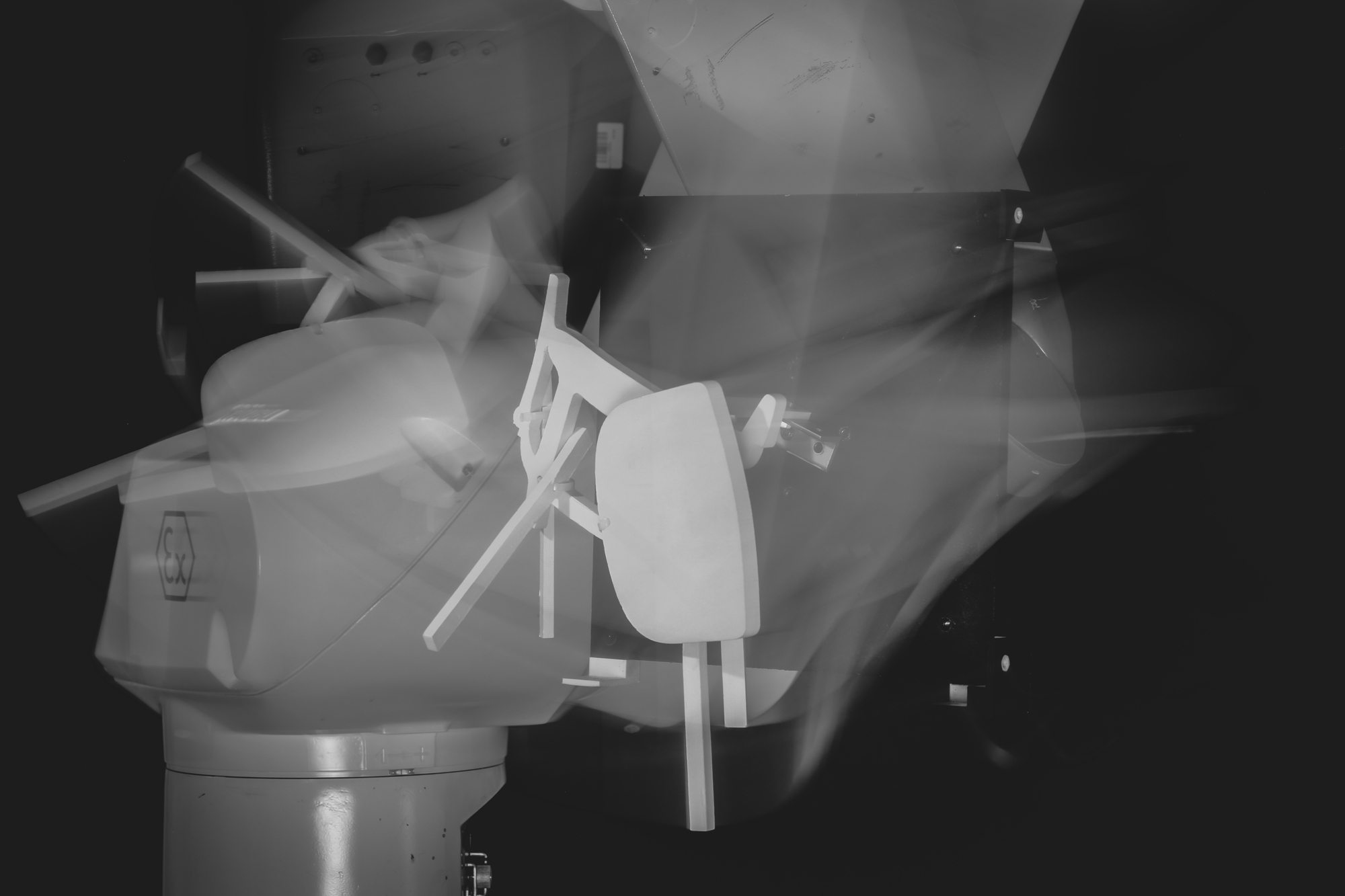
Together at the behest of then-SCI-Arc director Eric Owen Moss, Testa and Weiser initially conceived the robotics lab as a tool for rethinking architectural instrumentation, focusing on creative and material representation and research rather than fabrication alone, which seemed to be the pervasive methodological application for robotics at the time. What began as an experimental bridge linking digital and physical methods of prototyping and rendering has since evolved into a still speculative, but ultimately more direct path to exploring data visualization, generative imaging, and new forms of diagrammatic modeling previously unutilized in architecture pedagogy. Starting with only 4 students in its earliest iteration, the Robot House now accommodates anywhere between 60-120 students each semester.
The lab is set up as a 1000-square-foot, dual-cell space: one room containing the six Stäubli robots, and the other—outfitted with projectors, 3D printers, and computers—functions as a staging area and classroom. Operating on various software-based interface platforms such as Maya and Rhino Grasshopper, the robots are programmable in real time using custom software written by the students and faculty that translates directly into movement, material manipulation, and fabrication by the robots’ kinematic arms.
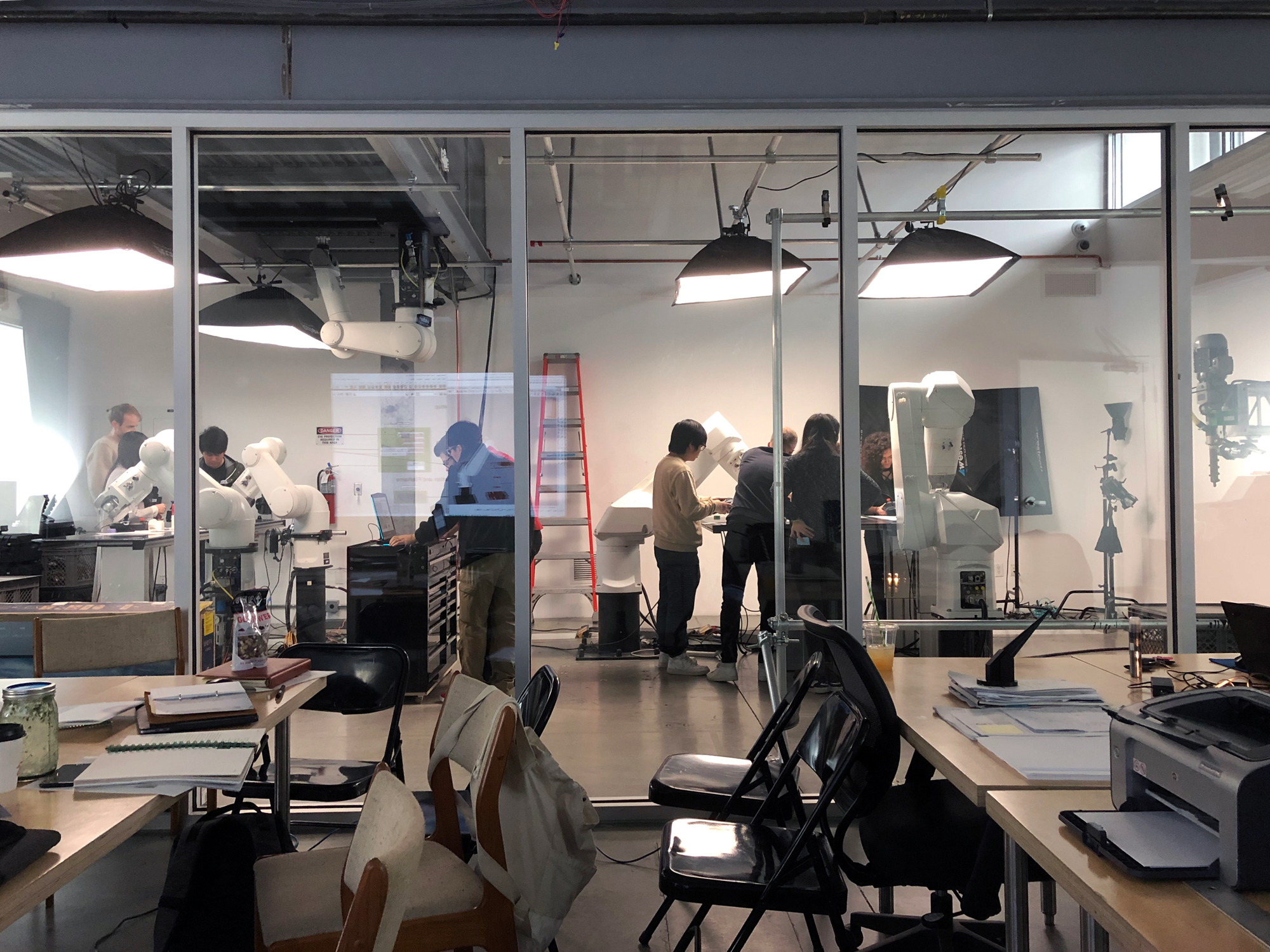
SCI-Arc Faculty and Robot House Coordinator Curime Batliner now organizes and facilitates courses and seminars for current students in the B.Arch, M.Arch, and postgraduate programs, as well as visiting participants with various outreach initiatives such as Design Immersion Days, Making+Meaning, and Pop-Arc workshops. Under the direction of Batliner, the Robot House hosts several seminars and electives each semester, taught respectively by design faculty M. Casey Rehm, Applied Studies Coordinator Herwig Baumgartner, Weiser, and Testa, not to mention serving as a de facto photography studio for students to document their work ahead of reviews and undergraduate and graduate thesis.
While an early objective of the Robot House was a heavy emphasis on design versus existing as a facility purely for construction and machine fabrication processes, Batliner explains the shift in focus on collaboration among students and robots in the lab. “By definition, [these robots] are straight out of a factory—usually the relationship between human and machine would be more like looking through the glass to see it do its thing.” However now, he says, “a lot of the interest is about how this machine interacts with a person or how you can do something together, so it is therefore much less about automation, but augmentation and exploration.”
Having received recognition alongside Critical Materials Institute of the Department of Energy, Stanford University Biodesign Collaboratory, and Aizenberg Biomimetics Lab at Harvard University as leading innovators in robotics in the United States, the work done at the Robot House has contributed to the discourse in architecture, “by fundamentally rethinking the role of visualization, representation, simulation, and presentation in a post-digital age,” says Weiser.
In an article published on the Robot House in Metropolis Magazine in 2017, the lab is described in terms of its contribution not only to SCI-Arc pedagogically, but what it represented at the time to the discipline of architecture itself. “In a lot of ways, a robot arm is a universal machine,” Testa is quoted as saying. “We can use cameras, scanners, tools with 3D printing, laser cutting, traditional fabrication capabilities, and slow-motion and high-speed videography to look at material processes,” he adds. “This ties back into architecture in terms of a long history of techniques of representation.”
Something that continues to be unique about the Robot House is how it allows for more open, experimental workflows in the completion of student projects. For example, Weiser has noted, “In a shop environment, typically, a student will have a specific task to be executed on a purpose-built machine e.g. laser cutter. In Robot House, workflows may be more spontaneous, with designers collaborating and interacting with machines and materials unexpected outcomes.”
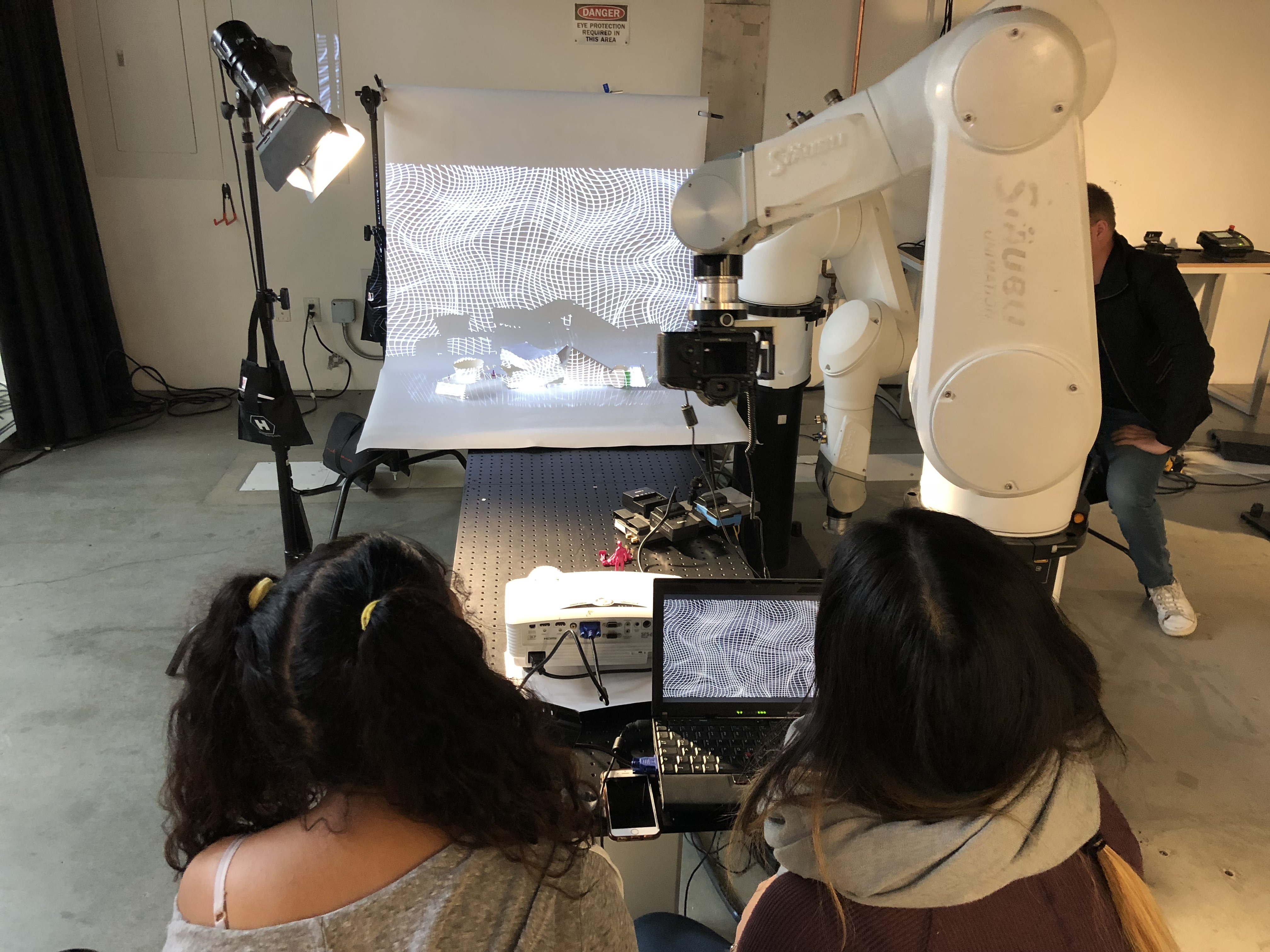
Some specific student projects referenced by Testa in his book Robot House—all using different techniques, models of practice, and applications—include FIN.0, a real-time physical animation and prototyping platform that supported the design and evaluation of 3D spline curve-driven surfaces in which robots are physically linked with rigid frames and flexible fiberglass splines controlling a large fabric surface; SOL.MOTION, an investigation of representation and manipulation of 3D objects within a virtual/physical or “phygital” [term referring to hybridization of physical and digital forms] motion-based space; and Object Animation, a project series led by Weiser, which looked at robotic stop-motion animation as a way of combining robotic production to manipulate physical objects and capture motion sequences and a post-production to composite CG and stop motion.
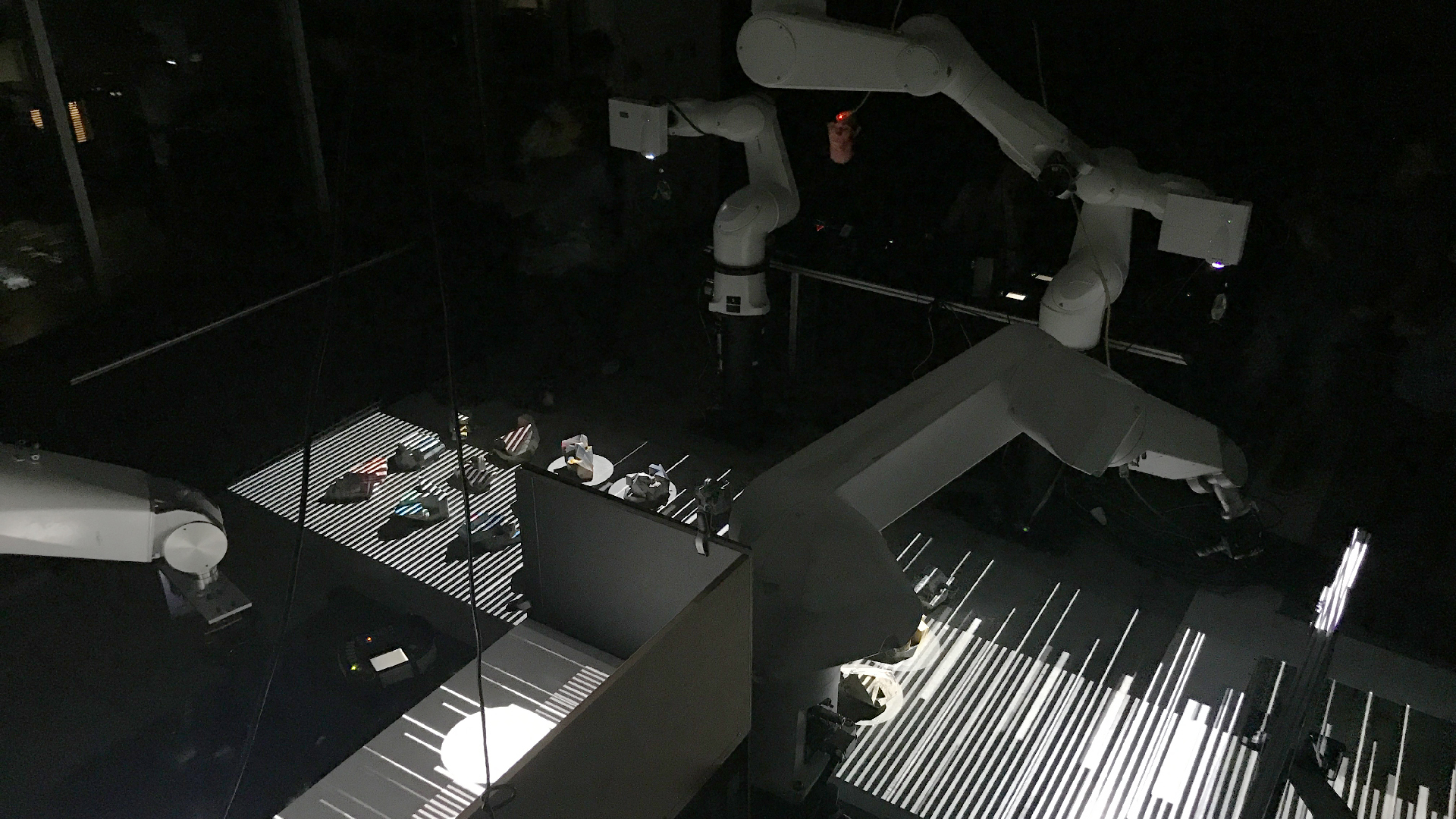
There are now a number of courses led by various faculty such as Batliner, Weiser, Baumgartner, Testa, and Rehm on topics such as neural networks, AI, and alternative feedback and control models. An example of an in-progress project currently being done by students in the Robot House as part of the Applied Studies curriculum—led by Baumgartner—involves working with fiber reinforced 3D-printed ceramic components that are built, milled, and glazed by robot end arm tools like an industrial clay extruder and router, as well as multiple digital techniques, to produce geometrically complex, high resolution models.
According to Baumgartner, not only does the course focus on the importance of technical implementation of material development, but an emphasis on “really putting the architect back into the driver seat of designing not only the product but also an architectural production processes.”
Weiser and Batliner’s current Visual Studies seminar, by comparison, takes a novel approach to pedagogy in the Robot House, with students working for extended class sessions in pairs on drawing and extruding projects, “[They] are less interested in sitting in front of the 60 year-old computer interface, and more excited to collaborate, speculate, and produce work that crosses boundaries between digital and physical working spaces,” says Weiser.
As far as how faculty see students’ work impacted and influenced by their access to and involvement in the Robot House, Rehm says, “The current version of the Robot House has been an excellent platform for exploring interactive and experimental software platforms. From my initial courses I have emphasized collapsing the physical world and AI driven software packages to rethink the dynamic of design authorship and physical production.
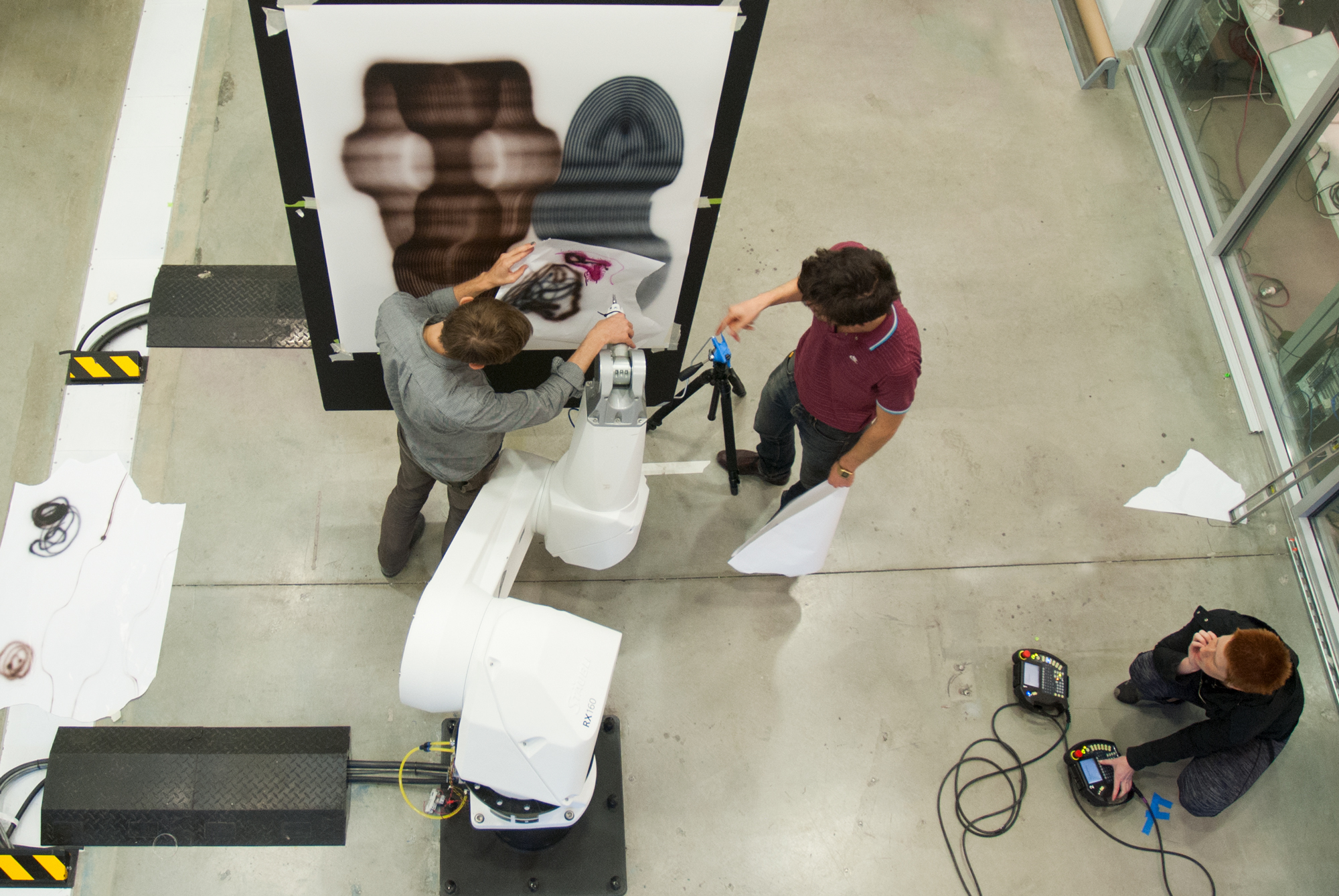
Baumgartner’s observation that one of the most significant benefits of students working directly with these materials and tools—like the robots—is how these become integral to their designs, “creating a direct feedback loop between designing and making, which I think is really valuable in their education because it is not something you are usually exposed to in the normal studio environment.”
The universal value for students working in the Robot House seems to be in their ability to gain a new and tangible spatial sensibility that is not available within standard screen-based computer interfaces, which are then widely applicable once they leave SCI-Arc and enter the workforce. Weiser believes that by their engagement with these tools and experiences while in school, “they gain new skill sets related to advanced motion control, imaging, and image processing that are becoming a part of our world and across every field; developing skills that are in increasing demand and graduates with extensive experience in Robot House are assuming leadership roles in many creative industries from Hollywood to Silicon Valley.”
Weiser views the multi-model and multidisciplinary approach of the Robot House for its potential as a cross-industry generic design, simulation, and imaging platform, “that will operate across design fields and include cinematic arts as well as industrial design, for high-end production of advertising, television and video productions, as an atmosphere that is more suggestive and ambiguous than typical workshop-type spaces.”
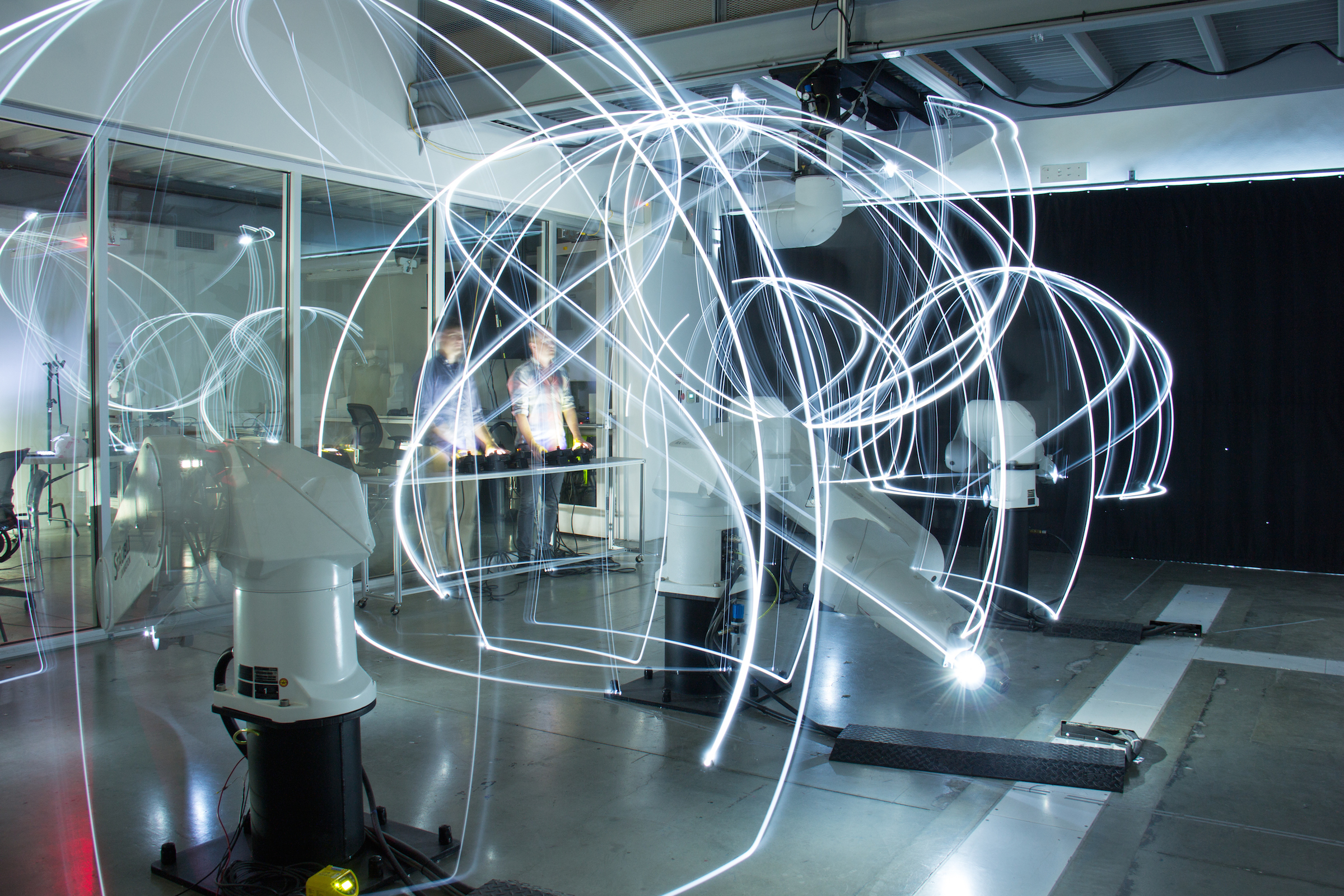
Regarding the imminent future of the Robot House, after receiving several grants SCI-Arc is now the process of installing a larger production robot and facility for architectural scale projects, for which Rehm and Baumgartner will be initial research directors.
For his part, Batliner sees the future of the Robot House as ultimately related to a larger significance of the work being done there; that which extends beyond architecture. “I think in general you can dive into all these discussions and techniques, which is a very useful kind of place from which to depart—and by being paired with architecture in many ways then has to do with how it impacts the built environment,” he says. “But the second you take this somehow seriously, you start thinking about how people interact with each other, and what kind of society you want to be.”